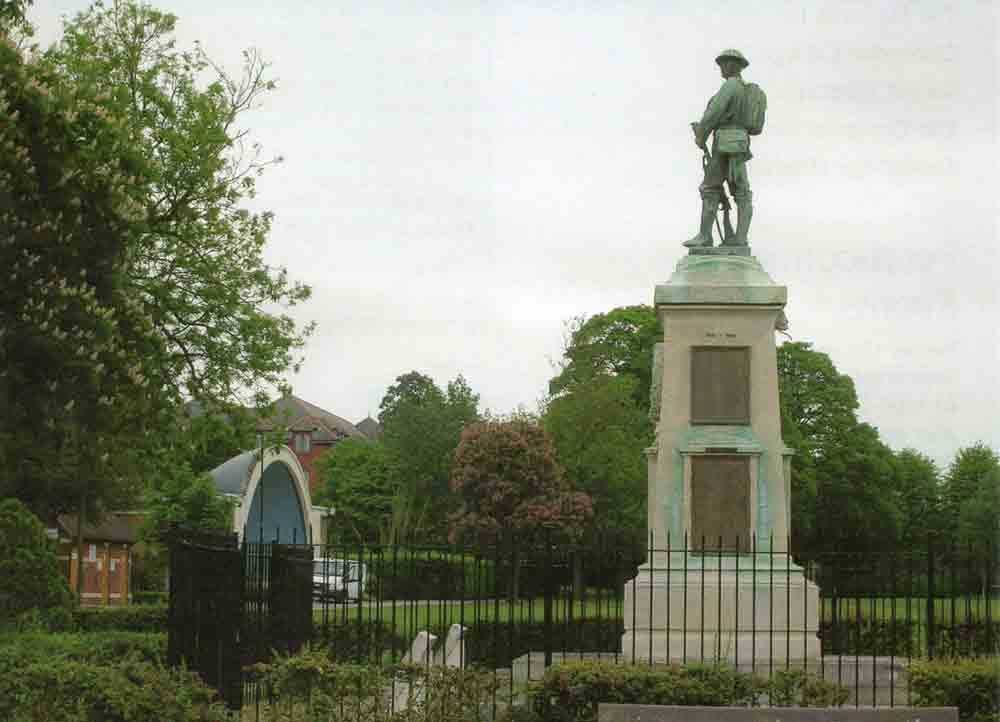 |
Trowbridge War Memorial |
Contents
Click on the item to go to the article. |
Editorial CommentIt seems time for the Society to engage in another project or campaign. With the radical redevelopment in Bythesea Road well underway, the revamped Town Bridge area and the proposed move of Wiltshire College (Trowbridge campus) to the old Bowyers site, how about a facelift for the ROSE AND CROWN? This is an imposing and interesting set of buildings in a prime position and could do with a new coat of terracotta masonry paint. Let us know (on 760139) if you agree and if so we will chivvy the committee for approval and action. We continue to be delighted with the flow of ideas and copy for your newsletter – the deadline for the next issue is Friday 8th May 2009. |
Forthcoming Events
| 2009 | ||
| Tuesday 17th March 19:15 |
Annual General Meeting followed by a talk from James Elliot, Architect |
Manvers Hall, United Church |
| Monday 20th April 19:00 |
Visit to Berkley and Rodden Churches led by Glyn Bridges | Meet at Berkley Church, Berkley near Standerwick BA11 5JH |
| Wednesday 20th May 19:00 |
Guided walk around Midsomer Norton led by Paul Meyer | Meet at Midsomer Norton Town Hall for drinks reception and illustrated talk. Walk at 19:30 |
| Saturday 13th June 10:00 am – 12:00 noon |
Coffee Morning and Bring and Buy | 46 St. Thomas' Road, Trowbridge. By kind invitation of John and Kay Austin |
From a Vice President
As many of you will know, Margaret and I went to France, to the town of Auby, in November to take part in the celebrations of the 90th anniversary of the end of the First World War. We were there because Margaret's Uncle Owen was killed in October 1918 and, possibly because the allies were advancing very rapidly, was buried in the town cemetery not in a war cemetery, one of the only two war graves there. We even had our photo published in “L'Aubygeois”. Auby is a small town of about 7,800 inhabitants, nestling inside a large built up-area, but still considered a separate entity as far as local government is concerned. It is, in fact, a commune, the smallest unit of local government in France. Auby is part of the department Nord, the next size up in the system and Nord and the neighbouring department, Pas–de–Calais, join to form the region, the largest unit. The area is densely populated, the department Nord, which contains the triple town of Lille, Roubaix and Tourcoing, alone has a population of two and a half million. L'Aubygeois is a glossy colour magazine of about 28 pages, which is produced every month by the town council and distributed free to every household in Auby (and sent to us by post). It contains local information such as Births, Marriages and Deaths, names of duty doctors and emergency telephone numbers, as well as news of the council's projects and an account of its meetings.
Auby has a town council of 29 members elected for a term of seven years. The majority party is a grouping of Socialist and Communist councillors and at their first meeting the councillors elect a mayor and his deputies. France has always been known as a centralised bureaucracy, but in the 1980s it was decided to move as much of the decision-making as possible nearer to the people. So, now, the council has responsibility for such matters as upkeep of primary school buildings, school meals, conservation of the natural and built environment, issue of building permits and public health. They provide and maintain sports facilities and have completed the first stage of a very elaborate project of urban renewal; with responsibilities came resources. In 2007, the last year for which I have figures, the budget was over 19,000,000 Euros which at the then exchange rate was equivalent to £13,000,000. The Mayor also officiates at all civil marriage ceremonies (obligatory in France; religious ceremonies are optional). All the councillors we know live in the town, are present at all main events, and so are well-known to the inhabitants.
In Wiltshire these movements of responsibility are in completely the reverse direction. The 1974 local government reforms removed much decision making from the urban and rural district councils and vested it in the West Wilts District Council. I have always doubted whether, in an area like West Wilts, with five competing (?) towns, this arrangement was in the best interests of the townspeople of Trowbridge. Now, in spite of their objections, the County Council (soon to be known as the Wiltshire Council) has, at the behest of Whitehall voted, to abolish the districts and to take over many of the powers that once belonged to the urban and rural district councils. There is a website, which is long on generalities and short on specifics. There was consultation, they say “over 100” people were consulted, many not connected with local councils as well as “stakeholders” and existing members of various councils. Trowbridge will be divided into seven wards and so will have seven members out of a total of 98. There is to be a Trowbridge area, but no concrete indications of what powers it will have. There are many promises of consultation, but there is no guarantee that the wishes expressed will be translated into decisions by the council. Wiltshire is a county where all the towns are on the periphery, looking in different directions. For instance Trowbridge looks towards Bath and Bristol while Salisbury is turned towards the South East. Whether the Unitary Authority set– up is best suited to our county remains very much to be seen. I was told that the new arrangement will entail a different salary structure. The general consensus of the changes in French local government is that they cost the people more but are very much better at getting things done. We are told that a unitary authority will bring about considerable savings in expenditure. We must hope that these will be allied with enhanced efficiency.
Back to Contents
Planning Matters
NHS Wiltshire (the new name for Wiltshire Primary Care Trust) submitted an outline planning application for the new Primary Care Centre and extension of the existing GP surgery on the land to the NW of the cricket club field. NHS Wiltshire (the new name for Wiltshire Primary Care Trust) submitted an outline planning application for the new Primary Care Centre and extension of the existing GP surgery on the land to the NW of the cricket club field. We wrote saying that it should go ahead as soon as possible so that the people of Trowbridge Community Area can benefit from the enhanced services it will be able to provide. We also stated that we wanted arrangements made and agreed by all parties for the provision of suitable equivalent facilities for use by the cricket club and youth football teams for training and match play, as these are vital in helping young people to adopt and maintain a healthier life style. We think NHS Wiltshire is about to submit some amendments relating to access and some other issues.
An application to demolish and redevelop the former Treman Ltd factory site in Court Street with a 5 storey office block and a 2 storey building for retail and office use met with our approval. All the original features went in the post WW2 era. Conversion of offices to flats on the 2nd and 3rd storeys of Stone Mills was rejected. Also refused were alterations to the manager’s flat, Lovemead House. Consent has at last been given to alterations, an extension and some new build at Heywood House (formerly National Trust), creating offices and 27 residential units. Barton Finch Ltd had their outline plans approved for the Ushers bottling plant site. We must now await the full plans.
The former Tesco site, St Stephen's Place, is at last up for sale. Despite the current economic climate, it is encouraging that work continues on the Shires Gateway and Ushers Brewery sites. Modus are still proceeding with their plans for the Waterside development, albeit without the residential component in the Library building. I expect some of you saw the plans for relocating the Trowbridge campus of Wiltshire College to the Bowyers site, providing site purchase can be agreed. Also shown were plans for the listed buildings on that site, and the Shails Lane area.
Back to Contents
West Wiltshire Design and Built in Quality Awards 2008
The West Wilts Design Awards Scheme first took place in 2002 in order to identify examples of good quality development taking place within the District. The judges look for innovative and creative design, as well as high quality workmanship and building techniques. The name and style of the award was changed this year to take account of the ongoing partnership between Planning Policy and Conservation and Building Control, and to acknowledge the importance of good building quality.
This year the development on the Sleightholme site in Frome Road was the only Trowbridge entry and it won a design Award Commendation. In the view of the judges, “the scheme responds well to its setting and reflects the character of the surrounding development. The quality of the materials and attention to detail is commendable”. This particular project you may remember, won the Town Council7#39;s Town Enhancement award.
In 2006 Westcroft House in The Conigre and Newmarket House (Nutricia HQ) at White Horse Business
Park achieved design Awards. Mill House in Mill Street and 134 Bradley Road achieved Building Control
Construction Awards, not forgetting the Civic Society's Trompe L'oeil which received a Public Realm
Enhancement award in 2002.
Back to Contents
| TROWBRIDGE MUSEUM Congratulations for winning an award from the Association of Industrial Archaeologists (President Professor Angus Buchanan) for being the best site visited in 2008. Key factors were the displays, their interpretation and the way in which an industrial museum had been incorporated in a shopping centre. |
| Reminder Members are welcome to borrow the society pop-up GAZEBO for a minimum donation of £5. Contact Glyn Bridges on 755784. |
MILITARY RELICS revisited
Several readers have corresponded with memories and written records. In Frome Road David Perkins' shop premises was purchased, possibly by the vicar of Holy Trinity Church and run as a café (ca. 1860 – 1898), mainly for the benefit of Queen Victoria's gunners from across the road. As Holy Trinity, consecrated in 1838, was a garrison church it too is worthy of inclusion. David also reminds me that prior to the opening of St John's Church in 1876 the upstairs function room at the rear of the Anchor and Hope was the only meeting place for Roman Catholics from 1873. This room, which received a grant of £15 from the War Office for setting up, would certainly have been used by soldiers from the barracks. Steve Lovering tells me that Surrey Place was initially used as married quarters and is the only
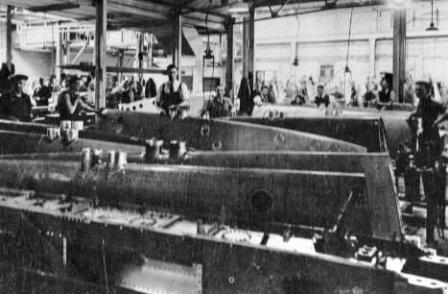 rubble–stone rank of houses in the town. Bernard Cox's written memoirs mentions the anchors for the County Hall camouflage nets. Some years ago these were photographed by Ken Rogers but I have been unable to find them. Bernard also recalls the strafing of a Royal Mail train as it left the station and was in the cutting near County Hall. Some rounds struck the side of 95 Newtown, then Mrs Laughland's wool shop, next to Newtown School. I have seen some chips here but which ones are due to enemy action is not clear. Not far from Cox's shop in Newtown the Rising Sun was obliged to cover its sign after Japan entered the war! In a similar vein a GWR locomotive called Japanese Monarch had its name plates removed. Philip Amor's abiding memory is of the happy and well liked German prisoner who married and stayed on in Trowbridge, working on the land until his untimely death at a relatively young age.
rubble–stone rank of houses in the town. Bernard Cox's written memoirs mentions the anchors for the County Hall camouflage nets. Some years ago these were photographed by Ken Rogers but I have been unable to find them. Bernard also recalls the strafing of a Royal Mail train as it left the station and was in the cutting near County Hall. Some rounds struck the side of 95 Newtown, then Mrs Laughland's wool shop, next to Newtown School. I have seen some chips here but which ones are due to enemy action is not clear. Not far from Cox's shop in Newtown the Rising Sun was obliged to cover its sign after Japan entered the war! In a similar vein a GWR locomotive called Japanese Monarch had its name plates removed. Philip Amor's abiding memory is of the happy and well liked German prisoner who married and stayed on in Trowbridge, working on the land until his untimely death at a relatively young age.
Several people, including John Hornby, mentioned the five buildings requisitioned as “shadow factories” for manufacturing parts for Spitfires. They were Dennis's Garage in Bradley Road (pipework), their Agricultural Machinery Workshop on Hilperton Road (wing sub frames), the Southwick site mentioned last time (leading edges), Fore Street Garage and the Central Garage (details and fittings, where David Perkins’ mother stamped out countless metal washers). The purpose–built Vickers Armstrong factory in Bradley Road is long gone. Final assembly and test flying was done at Keevil. Last time I mentioned a “Club Strip”. This should have read “Cub Strip” (so called because the ‘planes were Piper Cubs). There were two; the field adjacent to Southwick Court (32nd Field Artillery Brigade) and a field next to the Lion and Fiddle at Hilperton (153rd Liaison Squadron). All this is covered in David Berryman's book “Wiltshire Airfields in the Second World War”. For those interested in pill boxes and other ‘hardened field defences’, I can recommend two sources. Firstly Major M Green's book “War Walks – Stop Line
Green”, of which “our” pill boxes form a very small part. All the sites are listed and described and several walks
are recommended, including one in the Whaddon and Melksham area. Secondly, for Internet users go to the Google Earth map and home in on a nearby stretch of the River Avon. Yellow icons will appear – click on these for details of each site. A walk from St George's at Semington to the canal swing bridge will give an opportunity to study some of these – the Type 28A (or 29) with its bay for a 2 pounder anti tank gun being most impressive!
Enough!
Back to Contents
2008 School and College awards |
The Society are pleased to sponsor awards to outstanding students attending Trowbridge schools/
colleges. The 2008 award winners are as follows:
| Clarendon College | Josephine Bloomfield (excellence in History) |
| St Augustines | James Otto |
| Wiltshire College | James Savory (Celebration of Success Award) |
| John of Gaunt | Not awarded |
Back to Contents
Some Trowbridge Street Names West of the Biss
Stallard Street and Stallard's Corner, from a John Stallard who in the 17th century built a dwelling on the waste (a piece of land which was an unused edge of enclosed former common land). Stallard Street was originally the lane that led to his house. Newtown is a common place name and indicates a new part of a town built separately from what was seen to be the town proper. Although known as Pilewell for centuries (there are several wells shown in old maps of the area) building really began in Newtown in 1790 with the three storey terraced weavers' houses, with larger windows on the top floor for the workshop. Earlier single storey cottages were demolished in the 1920s with the existing small shop close to Gloucester Road being a remnant. These perhaps date from 1700. Wesley Road, from the Wesleyan Chapel. Gloucester Road, origin unknown. Park Street, from Park Farm, which in turn came from the name of its owners. Waterworks Road came from the proposed but failed waterworks in Frome Road. Bond Street, as in other towns, probably is copied from Bond Street in London.
Rock Road, from the Rock Building Society. Avenue Road is obvious. Mortimer Street, from the Mortimer family who had been major clothiers in the town from the seventeenth century. It was laid out in 1821 in the Long Field with 64 houses, probably for factory workers who could easily walk down the hill to the mills across the river. Bythesea Road is the most intriguing name in this area. Local wits have tried to persuade incredulous newcomers that the name comes from the distant past before the Biss silted up when fishing boats would come and moor up where County Hall is now! The Bythesea family became clothiers in the eighteenth century and owned much property in the area. The side of Newtown on which the school stands was finally built up in the late nineteenth century on land called the Bythesea Estate. Bythesea Road itself was made in 1895 when Bythesea Buildings was demolished and the land given to the town by Samuel Bythesea. The name is local to the Somerset/Wiltshire area and can be traced back to the sixteenth century.
(see note on Freshford visit in the Autumn 2008 Newsletter. Ed.)
Back to Contents
The Stallards Inn
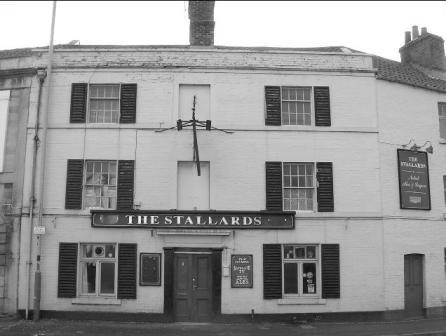 Edward Toomer of Four Counties Inns has asked the Society for help in finding out more about the origins of Stallard Street and the pub. This is a nice coincidence with Andy Milroy's piece in this Newsletter explaining some of the street names in that area. I remember the Stallards of the late 1950's as being quite pleasant and Edward plans to reopen it as a well restored, quality house specialising in real ales.
Edward Toomer of Four Counties Inns has asked the Society for help in finding out more about the origins of Stallard Street and the pub. This is a nice coincidence with Andy Milroy's piece in this Newsletter explaining some of the street names in that area. I remember the Stallards of the late 1950's as being quite pleasant and Edward plans to reopen it as a well restored, quality house specialising in real ales.
In Ken Rogers' “The Book of Trowbridge”, page 58 reports that a John Stallard was presented at the manorial court in 1660 and his house was probably at or near the junction, i.e. near the present pub, as the lane (now street) leading to his house (probably a cottage on the waste) bears his name.
The internet has a site listing over 30 Stallards for Trowbridge in the 16th and 17th centuries. A John Stallard, married to Alice in 1559, had a son William and a probable line of descent follows through two more Johns. The first of these married a Trowbridge woman, Jane Sartaine, in 1623 and his son married Mary and they had a daughter baptised in 1663. Either of these latter Johns could have been the one referred to by Ken Rogers and Andy Milroy.
The Stallards Inn (16 Stallard Street) was established as an inn in the 1860's (not therefore a coaching inn) as part of the mid Victorian redevelopment of almost all of Stallard's Corner.
Back to Contents
Galley Farm to Clarendon College
Being a collector of anything to do with Trowbridge, when Bob came across a document of 1862 at a paper and postcard fair in Devizes in 1995 he was more than pleased to purchase it. Mr J G Foley's “Particulars and Conditions of Sale for Two Freehold Farms etc.” contained a great deal of interest, particularly Lot 8 for Galley Farm – the future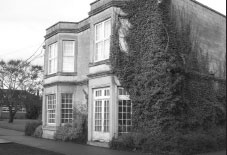 site of Nelson Haden and Clarendon Schools, now Clarendon College. Bob's daughter has happy memories of her time there in the 1970's and the central building is the old and imposing farmhouse, which with other buildings and field plans, is shown on the fascinating map included with the “Particulars”.
Last term as part of their humanities skills course work, a small group of pupils from years 7 to 10 produced an illustrated time line for
the three establishments. This work was guided by teachers Sally Cumberland and Linda Miller and includes photographs from the Museum archive and transcripts of interviews with former pupils and staff. One of the images is of boys of about 13 or 14 digging the footings for the first new school building! It is hoped that the time line will be preserved and perhaps made more accessible to the interested public.
site of Nelson Haden and Clarendon Schools, now Clarendon College. Bob's daughter has happy memories of her time there in the 1970's and the central building is the old and imposing farmhouse, which with other buildings and field plans, is shown on the fascinating map included with the “Particulars”.
Last term as part of their humanities skills course work, a small group of pupils from years 7 to 10 produced an illustrated time line for
the three establishments. This work was guided by teachers Sally Cumberland and Linda Miller and includes photographs from the Museum archive and transcripts of interviews with former pupils and staff. One of the images is of boys of about 13 or 14 digging the footings for the first new school building! It is hoped that the time line will be preserved and perhaps made more accessible to the interested public.
The college has a considerable archive and the Head, Colin Kay would be delighted if an individual or small team would write up a definitive history, starting with Galley Farm and progressing to the present.
Back to Contents
Cemetery Trail
A few years ago the Civic Society considered the idea of producing a trail for Trowbridge Cemetery but
the project was shelved due to lack of funds. Just before Christmas I was contacted by an officer from
WWDC to ask for our help in producing a historic/nature trail for the cemetery, a request to which I
readily agreed. I have heard nothing since, but will keep members informed of any progress.
Back to Contents
More Mortimer Street memories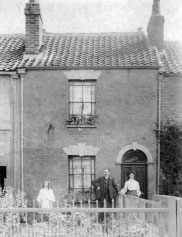
Our articles on Mortimer Street brought a response from Jack Carter who lived at number 5 until the family moved to nearby Stainer's Buildings in 1928 when he was 11.
I visited Jack at his home (one of the few original householder / self builders of Marshmead) and he reminisced about the old days and the folks who lived in places like Anstie’s and Barnett’s Courts. These are long gone but can be found on the Ordnance Survey “blue” facsimile Trowbridge map of 1899. He recalled many of the residents of Longfield House including a Mr Evans, who in his later years was wheeled about in a long wickerwork type of Bath chair. Many of us remember the side stream, known as the minibrook, beside the path by Longfield House, which then ran under the road and past the Three Horseshoes. Jack has an amazing memory for detail, backed up by his “bible”, a closely written notebook and a collection of photographs and slides.
RECENT MEETINGS |
Isambard Kingdom Brunel by John Salvat 14th October 2008
45 people met at the United Church to hear John’s talk which was very much enjoyed by all. Isambard's father Marc was born in France and came to England to develop his idea for the machining of ships' pulley blocks which up till then had been made by hand. Lord Nelson visited his works in the Portsmouth Royal Naval Dockyard to check on the progress of this scheme, which was subsequently adopted by the Royal Navy. Isambard, one of three children, was educated in Paris and proved to be a very able pupil. At 17 he helped his father build the first tunnel under the Thames, then the main sewer of London! Nearing completion, a banquet was held under the Thames with the band of the Coldstream Guards providing entertainment. Unfortunately the tunnel collapsed and Brunel nearly drowned but the tunnel was repaired and is still in use today. Isambard convalesced in Clifton and entered a competition to build a bridge over the Avon. We all know the finished product; it should have included sphinxes at each end but unfortunately money ran out before these could be completed. Brunel was very sociable; he entertained the composer Mendelssohn and was also considered to be a bit of a ladies man. His Bristol office had only one chair so that visitors would not interrupt his work for too long! His first railway was built for the Liverpool and Manchester Railway Company for the transport of coal and other goods, passenger trains came later. Then the GWR was born and Brunel's works included Paddington Station (the iron supports of the station roof are hollow to allow drainage of rainwater), a bridge built across the Brent and another across the Thames (here Brunel was only allowed to put in one arch, this weakened the structure and it collapsed, the bridge was rebuilt as Brunel wanted and is still in use today). Local examples of Brunel's work include Box Tunnel, Bath Station, many railway lines and other stations. Brunel travelled on the first train between Bath and Bristol and also turned his attention to shipbuilding, entering a competition to build a ship able to cross the Atlantic and thus we have the SS Great Britain which incorporated many innovations including the screw propellers. The portholes instead of being along the side are on deck above the cabins and consequently give much more light. The bridge over the Tamar and cable laying across the Atlantic were further achievements. His atmospheric railway was one of his few failures and another venture to encounter problems was the building of a large passenger ship, the Great Eastern, on the Thames. Because of its size it was launched sideways, the wooden supports broke up depositing the ship into the mud and at least one man was killed.
Brunel died aged only 53 on 15th September 1859 and did not live to see his beautiful Clifton Bridge completed but many of his ideas and procedures are still in use today.
Annual Public Lecture by Andrew Jones 18th November 2008
Over 40 Society members and visitors listened to a fascinating presentation by Andrew Jones entitled ‘Trowbridge Scrapbook Jottings’. Mr Jones has in his possession 18 scrapbooks that were compiled by Miss Winnie Caines who lived her whole life (1896–1984) in Trowbridge. Her father was a tailor and had a shop at 44 Castle Street, at one time she worked for him, but later worked at County Hall. The cuttings date from the 1930s to 1984 and Mr Jones has extracted a selection which he had made into a PowerPoint slideshow.
The talk was divided into 5 sections, the first being ‘Old Trowbridge’ – this was more than a little depressing as it showed the demolition of many of the fine buildings in the town. The cuttings jogged the memory of the villas in Bythesea Road, the Victoria Institute and the lovely house ‘The Chestnuts’ in Union Street to name a few. The second, ‘Church and Chapel’, included photos of many church anniversaries and also showed the old St Stephens schoolroom in Castle Street before it was demolished.
Part 3 ‘Fire Flood and Snow’. Here the audience re-called with a shiver the –17°C recorded in 1982, the big freeze of 1962/3, the floods in Mortimer Street and the fires at County Hall and Knees. Next came ‘Trowbridge People’ among those appearing were Joe Collins, Rev Noel Calvin and Dr Bernard Bond who delivered over 2000 Trowbridge babies! The final section ‘Events’ reminded us of the 1970 dustmen strike and the amazing traffic snarl up in 1971 when the one–way system was introduced.
A really fascinating reminder of Trowbridge’s past which was enjoyed by all. A big thank you to Andrew Jones for creating the presentation and allowing us to browse through the original scrap books on display. He has promised to do a further presentation for us at a later date – which we shall certainly look forward to. Thank you to Peter Bull for running the raffle and to those members who donated prizes, also to Ruth Bridges for delicious refreshments.
New Year Social 13th January 2009
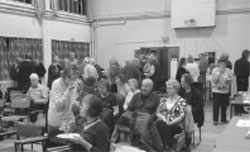 Fifty three members enjoyed the New Year Social held at the Manvers Hall of the United Reform Church. The spread, as always, was magnificent and Ruth Bridges made a delicious hot fruit punch. Our first quiz entitled ‘Odd Corners’ had us all puzzling over 20 photographs and sad to say, no-one managed to identify all of them. Steve Lovering identified the most proving how observant he is, and maybe how the rest of us see things but don't register them! After a break for refreshments, Glyn Bridges showed a selection of slides that he named ‘under stone’. These slides were of buildings in Trowbridge with stone roofs and even included a gate pillar in Wingfield Road which has a stone ‘roof’!
Fifty three members enjoyed the New Year Social held at the Manvers Hall of the United Reform Church. The spread, as always, was magnificent and Ruth Bridges made a delicious hot fruit punch. Our first quiz entitled ‘Odd Corners’ had us all puzzling over 20 photographs and sad to say, no-one managed to identify all of them. Steve Lovering identified the most proving how observant he is, and maybe how the rest of us see things but don't register them! After a break for refreshments, Glyn Bridges showed a selection of slides that he named ‘under stone’. These slides were of buildings in Trowbridge with stone roofs and even included a gate pillar in Wingfield Road which has a stone ‘roof’!
Several members brought some recently acquired Trowbridge memorabilia, including a set of badges of Trowbridge organisations, a mineral water bottle unearthed in a member's garden and a group photograph from North Bradley including Sammy Paradise. We are grateful to Glyn for setting up the quiz and slide show, he certainly knows the odd corner or two. Thanks to Peter Bull for running the raffle which made £43 and to Ruth for her hot punch. All agreed a most successful evening.
An Interview with Russell Brown Conservation Officer for West Wiltshire District Council
Russell came to West Wilts District Council in 2003 following his graduation in Town and Country Planning at the University of the West of England in Bristol. For two years he worked as planning officer, during which time he became more interested in the heritage side of planning and two years later he was made Heritage Development Officer. He worked closely with Caroline Power and when she left the council he was made Conservation Officer.
His job involves conserving Grade I; Grade II and Grade II* listed buildings and maintaining the ‘Buildings at Risk’ register. He also reviews conservation area assessments and designates new ones.  This is very busy job when you consider that he has the whole of West Wiltshire to cover on his own whereas in North Wiltshire there are nine officers to cover that area.
This is very busy job when you consider that he has the whole of West Wiltshire to cover on his own whereas in North Wiltshire there are nine officers to cover that area.
Russell was brought up in Keynsham and has family links with Trowbridge in that his father (now with his own engineering company)served his apprenticeship at Hadens.
I asked Russell which project he was most pleased with since being in the post – the answer was the group of buildings at 46 Stallard Street. These are old wool warehouses which Russell worked very hard to conserve and restore and indeed they certainly enhance the town. He also mentioned Kings Farm North Bradley which has been so sympathetically restored after being rescued from near collapse. He is kept very busy having to watch over the other 4 towns of West Wilts – not to mention all the villages in between, and at present is working very closely with the developers of the Ushers Brewery site in Manvers Street. The corner building with Back Street has had to be taken down but will be faithfully reproduced and Russell is in close contact with the stone masons involved who are very keen to do a good job in the restoration, which will be a complete replica of the original building.
We wish Russell good luck in the post and look forward to working with him in the conserving and restoring of buildings in the town and surrounding area. He says he loves listed buildings and I feel we are lucky to have such an enthusiastic Conservation Officer and hopefully, when we have the new Unitarian arrangements in the county, he will have some additional colleagues to help him save our precious heritage.
Back to Contents
Trowbridge Almshouses Past and Present
Almshouse trusts originally relied upon rental income from land and property endowment to support their buildings and residents. Residents are known as beneficiaries as no rent is charged. Support would have been a weekly cash sum, and also included such items as bread, coals and even clothing. To qualify as beneficiaries pensioners must be fit, on low incomes and older than 60 or 65 depending upon the trust deed. Almshouses today are organized as charitable trusts, owned by and registered with the Charity Commission and with a few exceptions provide only housing for the beneficiaries. Almshouse Charities now depend largely upon Weekly Maintenance Contributions from the beneficiaries. These WMCs are traditionally less than market rents and are not for profit. However due to the rising cost of maintenance, insurances etc. are ever increasing. Poorer beneficiaries are enabled to pay through Housing Benefit and Pension Credit just as if they were tenants. Chapels and churches were the main providers in the town for the poorer members of their congregations. There were however several philanthropists who personally founded almshouses.
The Old Almshouse 1483–1786. The gift of James Terumber. It was endowed by him on death with his property of land, woodland and buildings in several local parishes. The trustees were the priest and churchwardens of St James Church. The six beneficiaries received housing and support of 3s 4d quarterly on condition they pray twice daily for his soul and the souls of his wives.
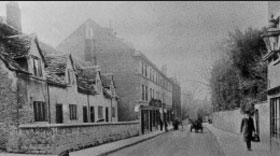 |
The original Yerbury almshouses |
The New Almshouse 1679. Later the New Yerbury Almshouses. Originally the gifts of several of the Yerbury family “For 6 women inmates – four of whom must be C of E”. An equal sum to the cost of the almshouses £660 was laid out to purchase freehold land for the support of the almshouses including adjoining land known as ‘Ostlers’ and Pepper Acre in total over 3.75 acres. In 1739 it was recorded that a further 10 acres had been acquired in and around Trowbridge. The rents of which, for the maintenance of the buildings and support of the almspeople in the growing town must have been considerable. By 1793 John Ching had certainly developed the present Yerbury Street. The original terrace of stone tiled cottages (illustrated) were redeveloped to their present form in 1914 but ceased as almshouses in 1991 when they were sold, converted and resold as private houses. The proceeds of the 1991 sale passed to Lady Browns Cottage Homes in 2008.
Those at the United Reform Church (formerly the Tabernacle) in Church Street date from the mid 19th century in an older style, and until the 1990s were nominally free to qualifying members of the congregation although contributions were gratefully received in the offertory on Sundays. These were administered by a committee of elders and stewards of the church but were neither registered as a charity nor almshouses. Residents may have been single or married. Today the residents are normal rent paying tenants of the church.
Union Street Almshouses 1860. The existing buildings were founded on the instigation of the Rev’d J D Hastings the rector of St James – “eight small tenements for aged men and a residence for the sexton.” Apparently fourteen old houses were purchased and demolished to clear the site and widen the street. At the same time this part and most of Back Street was renamed Church Street. The cost of building and providing for the inmates (sic) was raised almost entirely by public subscription. On completion the inmates were paid five shillings a week and given free bread and coals. The building style is described as Tudor vernacular, of two storey and originally eight ‘tenements’ arranged four up and four down. Access to the first floor level was by an external stone stair to a covered balcony. Today this steep stair still exists but has been superseded by internal staircases to reach the bedrooms and bathrooms from the living rooms and kitchens below while the number of ‘tenements’ has been reduced to a more spacious four. Rear access is by a narrow covered passage to a yard shared with the cottages. All four almshouses are currently occupied and include one married couple. Three of the current board of nine trustees are nominated by the Town Council.
Salters Almshouses Union Street 1884. Originally provided by an indenture of 1851 and by the will of Samuel Salter. They are a row of three brick cottages and another adapted from a schoolroom. “For poor men and poor women being respectively widowers and widows (from the congregation of Emmanuel Baptist Church). No widow under 30 and no widower under 40 years of age. They must vacate the almshouse if they should remarry and no widow or widower be elected who five years preceding had not been a member or communicant of the congregation.” The costs of the almshouses and support for the beneficiaries were borne by rental income from The original Yerbury Almshouses property fronting Church Street. Custodianship of all the property including the chapel has recently passed from the congregation to the South West Baptist Union.
Palmer's Almshouses Islington 1892. An existing block of three 2-storey dwellings with 2 bedrooms each together with a wash house. They are timbered with brick nogging at the front and sides, ornate porches, a tiled roof and brick chimneys. As a group their appearance is likened to a ‘16th Century Manor House’. A terracotta plaque over the centre reads: “These almshouses erected and endowed in 1892 by George Llewellen Palmer in memory of his father Michael Palmer who died in 1891 aged 77.” George Palmer was a clothier of Palmer and Mackay who ran Court and Ashton mills. As almshouses the buildings ceased in 1992, were subsequently sold, renovated and resold as three private houses. The proceeds of the sale still support organizations for the needy and the remaining almshouses in the town through the Palmer Charity. The last board of trustees was represented by Mann, Rodway and Green Solicitors of 9 Union Street.
Zion Chapel in Union Street 1893. Land and buildings behind and beside the 1816 chapel were known as Barton Court where a group of chapel buildings included Nos 7 and 8, two almshouses each of two rooms. Maintenance of the almshouses and support for the beneficiaries came from rental income from a three storey tenement known as Nos 1 and 2 Zion Buildings on the frontage known later as No.21 Union Street. Beneficiaries were poor members of the congregation, usually widows, and the trustees were members and deacons of the chapel. The last beneficiary to leave was Miss Edith Chapman in 1956 and her almshouse No.8 was demolished soon afterwards. No.21 lasted until 1971.
Lady Brown's Cottage Homes. In 1900 Sir Roger Brown erected and endowed these existing six ornate cottages in
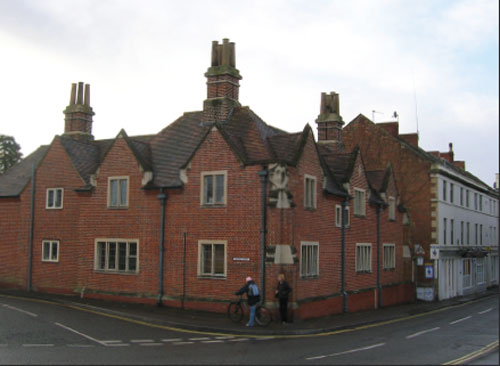 |
Yerbury Almshouses as rebuilt in 1914 |
There are two ornate blocks of three each described as ‘Tudor style picturesque’ designed by A S Goodridge of Bath (also architect of the Town Hall) each of slightly different plan. In 1974 the trust was reconstituted and the buildings renovated. The existing coal store in each and a small wash house at the rear were combined to make a bathroom. There was also a modern kitchen and electric heating fitted. The glass roofed veranda across the front of each block was removed but the fourteen tall ornate chimneys were restored in 1986. In 1999 the metal windows were renewed and in 2007 the railings restored along the Trowbridge Park boundary. All six cottage homes are currently occupied by
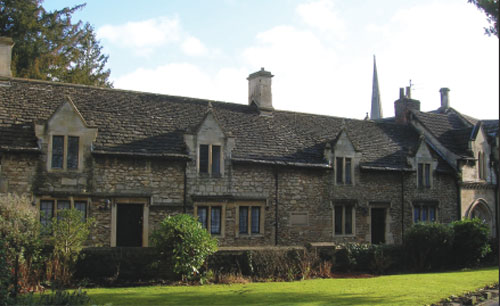 |
United Reform Church (Tabernacle) Almshouses |
Bethesda Baptist Chapel Court Street founded in 1825. In 1902 Two of a group of four 1885 cottages Nos 4 and 5 Court Street were mortgaged as almshouses to provide for poor members of the congregation. The trustees were members and deacons. The cottages were demolished quite sometime before the whole of this site was redeveloped as part of The Shires shopping precinct.
The only active almshouses that now remain in Trowbridge are Union Street Almshouses and Lady Brown's Cottage Homes. Housing for the ‘poor’ is now largely a service provided by the local authority through various housing associations. However almshouses throughout the country still provide characterful self–contained accommodation in friendly groups at competitive cost for the elderly whilst preserving interesting buildings in convenient town and village locations.
Back to Contents
British Association for Local History (BALH)
The committee circulates the journal and magazine for the above but it is not practicable to do this for all members. You can however view the BALH programme at www.balh.co.uk. Relevant to Jim Denning's article is the Local History Day annual lecture “The English almshouse and the mixed economy of welfare: medieval to modern” by Professor Nigel Goose on Monday, 6th June 2009 in London. Any of us can attend at a discount price of £12.50 including coffee, packed lunch and tea. Prior booking is essential. Forms available from John Austin.
Coleman's Family Dental Practice – our first Corporate Member
|
New Members
Mr Tony Buckingham, Mr and Mrs Collier, Mr and Mrs Fitzgibbon, Mrs Jenny Ladd, Mrs Janet Mason, Mrs Anne Riordan, Mrs B Smith, Mrs A Whitehead.
©Trowbridge Civic Society 2009